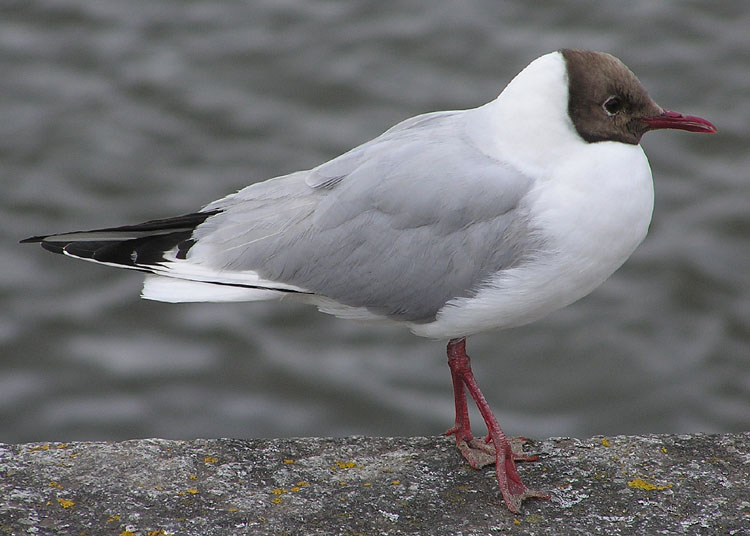Black-headed Gull (Larus ridibundus) - Wiki Black-headed Gull
From Wikipedia, the free encyclopedia
[Photo] Larus ridibundus, Black-headed gull at Ilfracombe on the North Devon coast, England. Taken by Adrian Pingstone in July 2004 and released to the public domain.
The Black-headed Gull, (Larus ridibundus), is a small gull which breeds in much of Europe and Asia, and also in coastal eastern Canada. Most of the population is migratory, wintering further south, but some birds in the milder westernmost areas of Europe are resident. Some birds will also spend the winter in the northeastern United States.
This gull is 38-44cm long with a 94-105 cm wingspan. It breeds in colonies in large reedbeds or marshes, or on islands in lakes, nesting on the ground. Like most gulls, it is highly gregarious in winter, both when feeding or in evening roosts. It is not a pelagic species, and is rarely seen at sea far from coasts.
The Black-headed Gull is a bold and opportunist feeder and will scavenge in towns or take invertebrates in ploughed fields with equal relish.
In flight, the white leading edge to the wing is a good field mark. The summer adult has a chocolate-brown head (not black, despite the name), pale grey body, black tips to the primary wing feathers, and red bill and legs. The hood is lost in winter, leaving just dark vertical streaks.
This species takes two years to reach maturity. First year birds have a black terminal tail band, more dark areas in the wings, and, in summer, a less fully developed dark hood.
This is a noisy species, especially at colonies, with a familiar "kree-ar" call.
The Black-headed Gull is the prefectural bird of Tokyo and the Yurikamome mass transit system is named after it.
http://en.wikipedia.org/wiki/Black-headed_Gull
| The text in this page is based on the copyrighted Wikipedia article shown in above URL. It is used under the GNU Free Documentation License. You may redistribute it, verbatim or modified, providing that you comply with the terms of the GFDL. |
